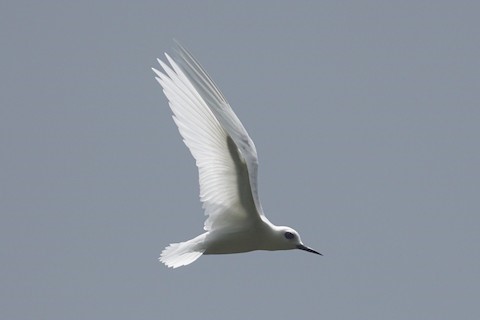Birdfinding.info ⇒ Locally common but declining in its small, remote Polynesian range. It can be found on and around most of the main islands of the Marquesas, including Nuku Hiva and Ua Huka.
Little Fairy-Tern
Gygis microrhyncha
Endemic to the Marquesas Islands of eastern Polynesia; formerly also in Kiribati.
In the Marquesas, resident essentially throughout, from Hatutaa and Eiao to Fatu Hiva. On the northernmost island, Hatutaa, it has been mostly replaced by the Common Fairy-Tern (with some evidence of hybridization), and the same process may also be occurring on nearby Eiao.
In Kiribati, known from specimens collected on expeditions to the Phoenix and Line Islands during the 1920s and ‘30s, but there seem to be no subsequent records.
There is a single record from Hawaii: a specimen found dead after a storm in Kahuku, Oahu, on April 21, 1924 (photo below).
Identification
A small, ethereal, all-white tern with a daggerlike black bill and a black eye bordered by black feathers. The tail is slightly notched but usually appears square or rounded
Juveniles are mostly white with ginger-brown fringes on the upperparts and a spattering of brownish spots on the underparts.
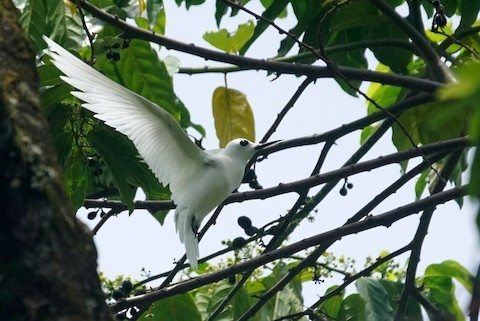
Little Fairy-Tern. (Nuku Hiva, Marquesas; February 3, 2020.) © Mike Pennington
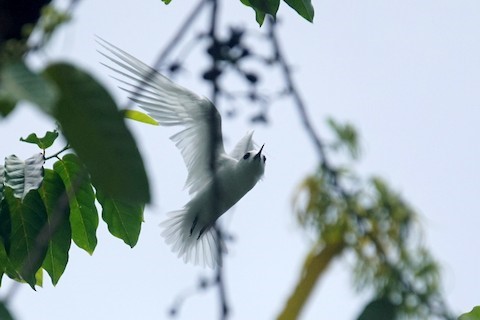
Little Fairy-Tern. (Nuku Hiva, Marquesas; February 3, 2020.) © Mike Pennington
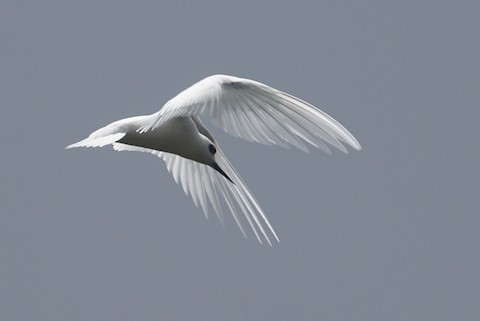
Little Fairy-Tern. (Nuku Hiva, Marquesas; February 3, 2020.) © Mike Pennington
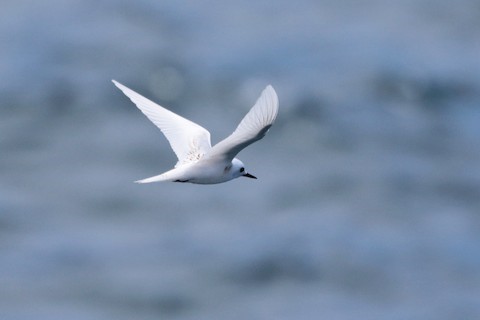
Little Fairy-Tern, immature. (Nuku Hiva, Marquesas; November 17, 2018.) © Margaret Sloan
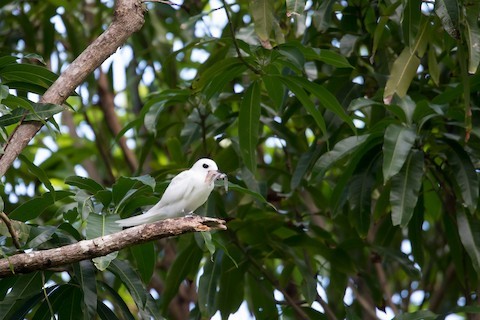
Little Fairy-Tern, holding several small fish in its bill. (Ua Huka, Marquesas; June 28, 2018.) © Mike Greenfelder

Little Fairy-Tern. (Nuku Hiva, Marquesas; November 17, 2018.) © Margaret Sloan
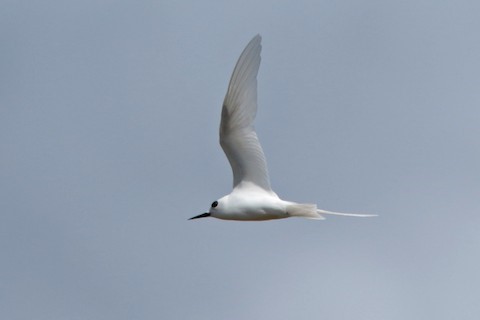
Little Fairy-Tern, showing notched tail. (Nuku Hiva, Marquesas; November 12, 2018.) © Margaret Sloan

Little Fairy-Tern. (Nuku Hiva, Marquesas; November 12, 2018.) © Margaret Sloan

Little Fairy-Tern, immature. (Nuku Hiva, Marquesas; November 17, 2018.) © Margaret Sloan

Little Fairy-Tern, juvenile—although Common Fairy-Tern predominates on this island, this individual was judged to be Little, but it could possibly be a Little-Common hybrid. (Hatutaa, Marquesas; September 25, 2013.) © David Sargeant
Cf. Common Fairy-Tern. Common Fairy-Tern potentially occurs throughout the eastern Polynesian range of Little Fairy-Tern, and is in the process of displacing it, as Little formerly occurred more widely across large areas of the central Pacific currently occupied exclusively by Common. They were traditionally considered conspecific but differ fundamentally in size, bill shape and color, and tail shape.
Little is about 15-20% shorter in most measurements, and has a thinner, straighter, all-black bill—whereas Common’s appears more upturned and typically shows extensive blue at its base (see Pratt 2020 for detailed comparison). Little’s tail has a shallow notch and rounded corners, whereas Common’s is forked, or deeply notched, and usually has pointed corners. Little also shows a proportionately larger black eye-ring, but this is difficult to evaluate without photographs to compare.

Common (top) and Little Fairy-Tern specimens, showing differences in overall size and bill shape—note that Common’s bill has a blue base when alive, but the color does not remain on specimens. (Common, G. a. candida, collected at French Frigate Shoals, Hawaii, on April 5, 1999; Little, G. a. microrhyncha, collected near Kahuku, Oahu, Hawaii, on April 21, 1924.) © Peter Pyle
Notes
Monotypic species. Traditionally considered conspecific with Atlantic Fairy-Tern (G. alba) and Common Fairy-Tern (G. candida), known collectively as the White Tern (G. alba), but the anatomical differences among them are substantial, as detailed by Pratt (2020), almost certainly sufficient to sustain recognition as separate species.
References
BirdLife International. 2018. Gygis microrhyncha. The IUCN Red List of Threatened Species 2018: e.T22694830A132576654. https://dx.doi.org/10.2305/IUCN.UK.2018-2.RLTS.T22694830A132576654.en. (Accessed November 17, 2020.)
eBird. 2020. eBird: An online database of bird distribution and abundance. Cornell Lab of Ornithology, Ithaca, N.Y. http://www.ebird.org. (Accessed November 15, 2020.)
Harrison, P. 1983. Seabirds: An Identification Guide. Houghton Mifflin, Boston.
Howell, S.N.G., and K. Zufelt. 2019. Oceanic Birds of the World. Princeton University Press.
Pratt, H.D. 2020. Species limits and English names in the genus Gygis (Laridae). Bulletin of the British Ornithologists’ Club 140:195-208.
Pratt, H.D., P.L. Bruner, and D.G. Berrett. 1987. A Field Guide to the Birds of Hawaii and the Tropical Pacific. Princeton University Press.
Pyle, R.L., and P. Pyle. 2017. The Birds of the Hawaiian Islands: Occurrence, History, Distribution, and Status. Version 2 (January 1, 2017). http://hbs.bishopmuseum.org/birds/rlp-monograph/. B.P. Bishop Museum, Honolulu, Hawaii.
Xeno-Canto. 2020. White Tern – Gygis alba. https://www.xeno-canto.org/species/Gygis-alba. (Accessed November 17, 2020.)
